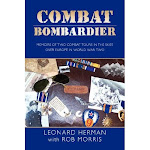

 Lena Mae O'Neal in a close-up from a group photo. (Courtesy of Nancy Hart, O'Neal's niece)
Lena Mae O'Neal in a close-up from a group photo. (Courtesy of Nancy Hart, O'Neal's niece) A photograph of Peggy O'Neal stands in front of her US Navy WAVE uniform. The immaculate and complete uniform, with cap and leather purse, was donated to me by a colleague Nancy Hart. Peggy was Nancy's aunt.
A photograph of Peggy O'Neal stands in front of her US Navy WAVE uniform. The immaculate and complete uniform, with cap and leather purse, was donated to me by a colleague Nancy Hart. Peggy was Nancy's aunt. Peggy's WAVE uniform, looking as new as the day she got it, stands in a place of honor in my small museum. Note her name "L.M. ONEAL" stenciled on the WAVE-issued purse.
Peggy's WAVE uniform, looking as new as the day she got it, stands in a place of honor in my small museum. Note her name "L.M. ONEAL" stenciled on the WAVE-issued purse.The WAVES were the women's arm of the United States Navy during World War Two. Many women served in jobs that would otherwise have been done by men, thus freeing the men to fight in the war effort.
A colleague of mine at work, Nancy Hart, had an aunt named Lena Mae O'Neal. Ms. O'Neal went by Peggy. Peggy served in the WAVES in World War Two as a cook. She was stationed in San Diego, California and in New York. A few years ago, her niece Nancy gave me Peggy's entire WAVE uniform, complete with purse and cap. This set is a priceless artifact and one of the crown jewels of my collection.
Peggy O'Neal was born in 1917 in Springfield, Missouri. In 1939, she went to California. Her brothers and sisters were all involved once the United States entered the war. Her oldest brother, James O'Neal, taught pilots to fly in Oklahoma. Her older sister Betty was a secretary on several different bases. Her brother Frank O'Neal, was injured in the Phillipines. While being transported on a hospital ship, the ship was bombed by the Japanese and Frank was killed. Her brother William O'Neal was in the Marines, and brother Emmitt was in the Coast Guard. Another sister, Dorothy, worked as a 'Rosie the Riveter' for McDonnell Douglas, building aircraft. Of the eight children in the O'Neal family, seven were involved in the war effort in some way.
Peggy passed away a few years ago. Today we honor her service and that of her siblings.
 A wartime recruiting poster shows a young WAVE prepared to serve her country.
A wartime recruiting poster shows a young WAVE prepared to serve her country.The United States Navy's history website has the following information on the WAVES:
"After a twenty-three-year absence, women returned to general Navy service in early August 1942, when Mildred McAfee was sworn in as a Naval Reserve Lieutenant Commander, the first female commissioned officer in U.S. Navy history, and the first Director of the WAVES, or "Women Accepted for Volunteer Emergency Service". In the decades since the last of the Yeomen (F) left active duty, only a relatively small corps of Navy Nurses represented their gender in the Naval service, and they had never had formal officer status. Now, the Navy was preparing to accept not just a large number of enlisted women, as it had done during World War I, but female Commissioned Officers to supervise them. It was a development of lasting significance, notwithstanding the WAVES' name, which indicated that they would only be around during the wartime "Emergency".

Recruiting had to be undertaken (or at least managed, as the number of interested women was vast), training establishments set up, an administrative structure put in place and uniforms designed. The latter effort produced a classic design that still has many elements in use nearly six decades later. Difficulties were overcome with energy and indispensable good humor, and within a year 27,000 women wore the WAVES uniform.

These women served in a far wider range of occupations than had the Yeomen (F). While traditionally female secretarial and clerical jobs took an expected large portion, thousands of WAVES performed previously atypical duties in the aviation community, Judge Advocate General Corps, medical professions, communications, intelligence, science and technology. The wartime Navy's demand for them was intense as it struggled to defeat Hitler and Mussolini in Europe and the Japanese in the Pacific.
At the end of the conflict, there were well over 8,000 female officers and some ten times that many enlisted WAVES, about 2 ½ percent of the Navy's total strength. In some places WAVES constituted a majority of the uniformed Naval personnel. And many remained in uniform to help get the Navy into, and through, the post-war era.






2 comments:
James O'Neal was an aircraft mechanic in Oklahoma. He did not teach pilots.
My Father William O'Neal was not in the Marines. He was in the Army Air Core and worked as an aircraft mechanic.
John Franklin O'Neal was not injured in the Philipines. He was serving with the Coast Artillery on Carregidor. When Corredidor fell, he was taken prisoner and was in the Philipine camp #1.
He died on the Arisan Maru, that was torpedoed by the U.S.S. Shark.
For more information read about the Hellships of world War II.
Thanks, John. I received my information from Lena O'Neal's niece Nancy. She did the best she could to provide me with the information. Thanks for correcting the mistakes.
Post a Comment